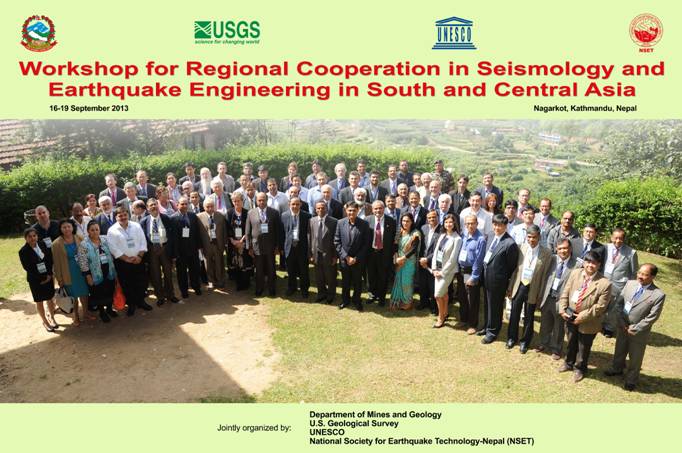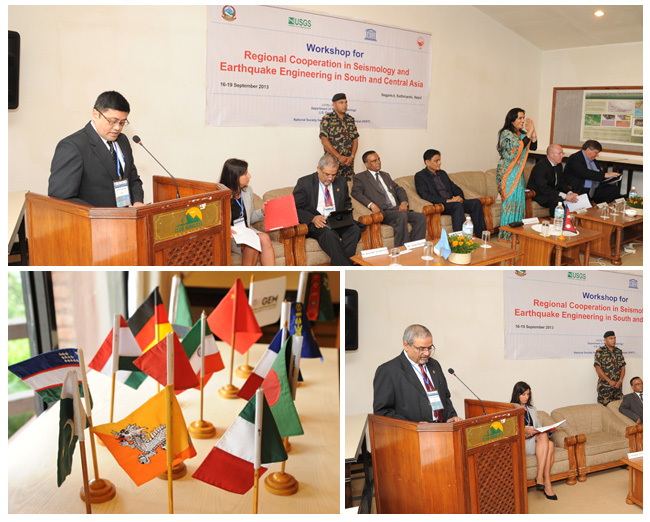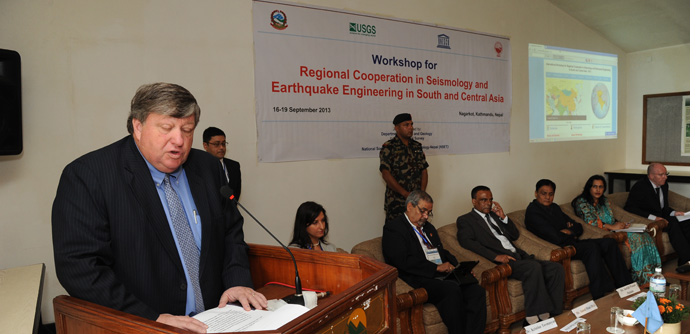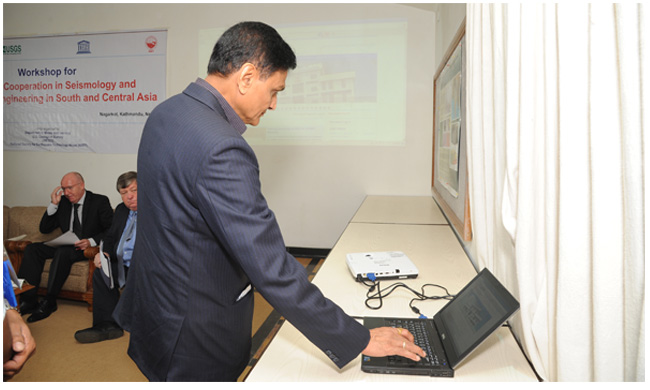- 28th Earthquake Safety Day to be observed with the slogan:
- 9th Asia Conference on Earthquake Engineering (9ACEE)
- Strengthening Resilient and Green Education: Equipment Handover for Safer, Sustainable Schools in Kirtipur and Lalitpur
- Climate Change and Environmental Awareness Campaign held in Mahalaxmi Municipality
- Resource-person development program held focused on comprehensive school safety (CSS) including climate change and green school concepts
- International Symposium on Earthquake Risk Reduction in Himalayan Region held in Kathmandu
- Nepal commemorates 27th Earthquake Safety Day with the slogan: "Lessons from the Past Earthquakes: Resilient Structures and Better Preparedness!"
- USAID supports education system restoration in Jajarkot and Rukum West
- Symposium on “Lumbini’s Path to Disaster Resilience and Tomorrow’s Rapti” concludes with “Rapti Declaration 2024”
- Geospatial Information Management Workshop is underway at NSET
- View all
Workshop for Regional Cooperation in Seismology and Earthquake Engineering in South and Central Asia
An international scientific meeting on “Regional Cooperation in Seismology and Earthquake Engineering in South and Central Asia” has been today started in Kathmandu, Nepal. The meeting has brought together regional and international experts to discuss and share information on seismology and earthquake engineering. The workshop is scheduled for four days.
Hon. Minister Mr. Uma Kant Jha, Ministry of Science, Technology and Environment, Nepal graced the occasion as Chief Guest. In his inaugural speech, Mr. Jha expressed his happiness to host such important scientific discourse in Nepal and also registered government commitment to pay efforts on scientific studies and activities to save lives of people from potential threats.
The inaugural session was chaired by Ms. Yam Kumari Khatiwada, Officiating Secretary, Ministry of Industry, Nepal. Inaugural session was addressed by Mr. Sarbjit Prasad Mahato, Director General, DMG, US Ambassador H.E. Peter W. Bodde; Mr. Jamie MacGoldrick, UNRC, Kathmandu and Dr. Kristine Tovmasyan, Program Specialist, UNESCO, Paris.

The purpose of this meeting has been to bring regional experts from countries of south and central Asia to discuss and share information on seismology and earthquake engineering. The focus is on strong motion seismology, including overviews of monitoring programs in each participating country and discussion of key issues associated with both strong motion monitoring and engineering seismology.
The workshop is being jointly organized by Department of Mines and Geology (DMG), Nepal and the National Society for Earthquake Technology Nepal (NSET), and sponsored by the United States Geological Survey (USGS) and the United Nations Educational, Scientific and Cultural Organization (UNESCO). The workshop is now undergoing from September 16-19, 2013 at the Club Himalaya, located in Nagarkot, Bhaktapur.

The South and Central Asia region faces high levels of a variety of natural hazards, of which earthquakes are an important component. The region sits astride the boundary between the Indo-Australian and Asian tectonic plates, which earthquake scientists have estimated has a significant strain of 25mm per year. The region also includes the seismically active Hindu Kush zone. The need for an increased regional understanding of earthquake phenomena, and of the use of seismological findings, is driven by the fact that both the cause and impacts of earthquakes are generally spread over multiple countries.

The workshop commenced with following keynote addresses.
» Prof. Harsh K. Gupta, Hon. Member, National Disaster Management Authority, India: Earthquakes in the Himalayan Region: What can we do?
» Dr. Anatoly Ischuk, Institute of Geology, Earthquake Engineering and Seismology of the Academy of Science, Tajikistan: Seismicity and Seismic Hazards of the Central Asia Region
» Dr. Soma Nath Sapkota, NSC, Department of Mines and Geology: Seismicity and Seismic Hazards of the South Asia Region
» Dr. Susan Hough, Seismologist, US Geological Survey: Urban Strong Motion Monitoring: Challenges, Opportunities, Imperatives
» Mr. John Galetzka, Field Engineer/Associate Staff Geodesist, Caltech Tectonics Observatory: A Decade of Continuous GPS Monitoring in Nepal: Setting a Trap for the Next Giant Earthquake
There are four major technical sessions: Major Earthquakes in the Central Asian Region, Major Earthquakes in the South Asian Region, Strong Motion Monitoring; Earthquake Ground Motions and two working sessions entitled Existing Motion Station Coverage and Azimuthal Gaps in the Central and South Asia Regions. There is also a session devoted to recent international initiatives such as UNESCO's efforts in earthquake risk reduction. A field visit to observe urban earthquake vulnerability is also planned in Kathmandu city core area.

For more picture http://www.nset.org.np/seesca/gallery.php













